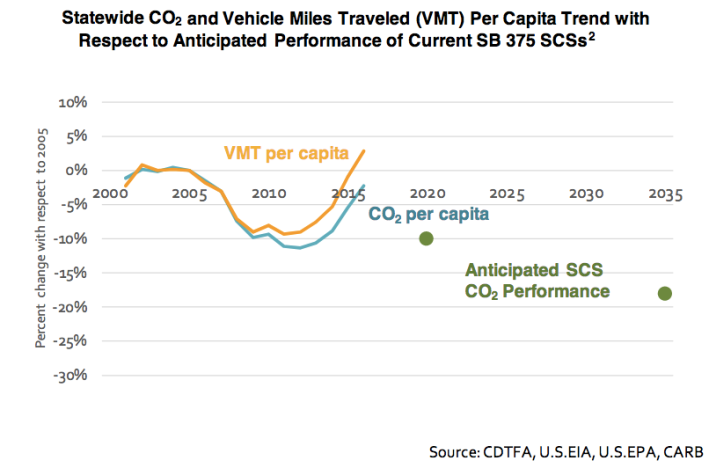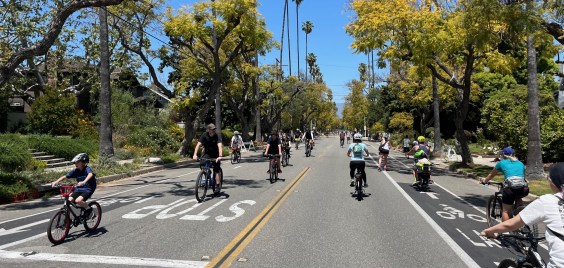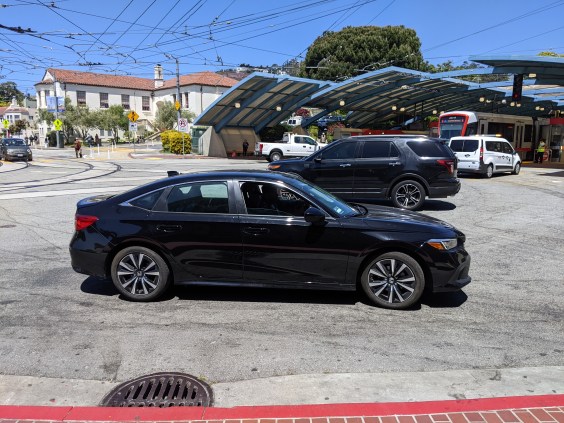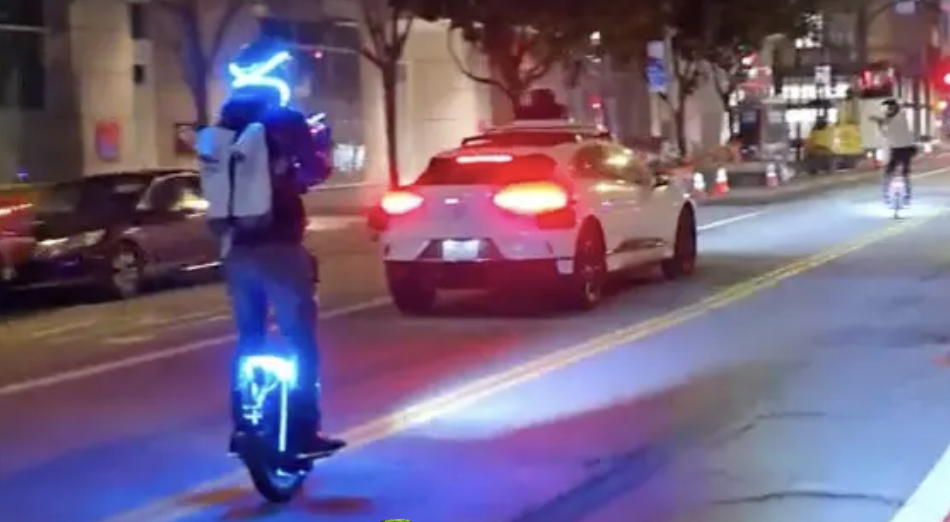Report: California Efforts to Reduce Transportation Emissions Are Not Working
5:36 PM PST on November 26, 2018
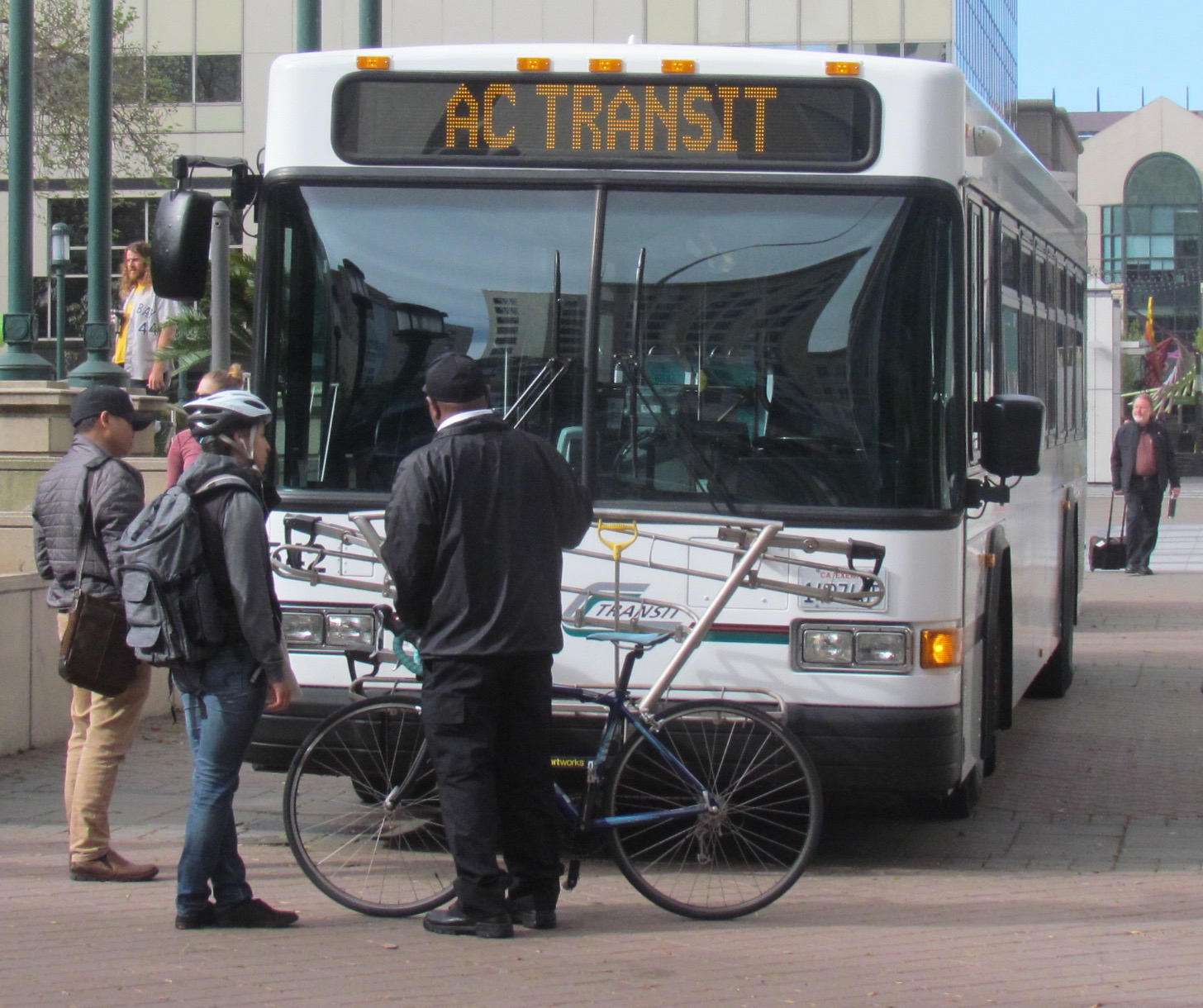
Can you imagine if transit just disappeared entirely? The threat is very real.
California has for years—since the passage of S.B. 375 in 2008, and even before that, with Regional Blueprint Strategies—sought ways to reduce greenhouse gas emissions by planning for housing, jobs, services, and transportation in ways that allow people to drive less. At least, that was officially how it was supposed to work.
S.B. 375 required regions to add “Sustainable Communities Strategies” (SCS) to their regional transportation plans. An SCS is supposed to lay out what regions—and the cities and counties in them—would do to help reduce the need to drive everywhere.
All the regions have these plans now: they say they will build more housing near transit, invest in better transit, and improve conditions for people walking and biking. But S.B. 375 only required that these plans to be written and approved. There were no enforcement measures, and until last year's S.B. 150 there wasn't even a requirement that progress be measured.
The first S.B. 150 report was released today, and it is not good news.
California regions are not on track to meet their greenhouse gas emissions targets, not by 2035, and not even the "easier" targets in 2020. Other reports have announced that California will meet its 2020 targets, but those emission reductions are almost entirely from cleaning up the electricity sector, specifically because of an increase in hydroelectricity made possible by heavy rains in the past few years.
Emissions in the transportation sector, in contrast, are rising, even with cleaner fuels and more electric vehicles.
The S.B. 150 report, pulled together by Air Resources Board (ARB) staff and based on data from regional agencies, shows that Californians are driving more, everywhere, per capita and over all.The report also finds that despite the existence of the SCS plans, regions are not investing enough in either climate-friendly transportation modes nor affordable homes near jobs and transit.
The report puts it baldly:
While positive gains have been made to improve the alignment of transportation, land use, and housing policies with state goals, the data suggest that more and accelerated action is critical for public health, equity, economic, and climate success....
California will not achieve the necessary greenhouse gas emissions reductions to meet mandates for 2030 and beyond without significant changes to how communities and transportation systems are planned, funded, and built.
“The plans are expected to meet the targets,” Ella Wise, State Policy Associate at ClimatePlan, told Streetsblog. “The problem is that they're not being implemented. We're not seeing the investments we need in affordable homes near transit, and in sustainable transportation infrastructure, so people can easily walk, bike, and take the train or bus — and so reduce driving.”
The targets are set by law—S.B. 32—and ARB works with the regions to set attainable goals for each. At every update to the state scoping plans, the regional governments—in Southern California, in the Bay Area, in Sacramento, in the Central Valley—have fought for easier emission reduction targets, claiming there are too many factors outside of their control that prevent them from meeting more stringent targets.
It's true that there are many challenges to this project, and the report discusses them in detail. There isn't enough housing being built of any kind, let alone the high-density, transit-adjacent kind. The report finds that while compact growth is increasing in California, so is urban sprawl.
There is only so much a regional planning agency can do. They control some transportation funding, but not all. They have the ability to create a few incentives or discourage bad planning because they make some transportation funding decisions, but most land use planning remains firmly within local control.
But there are some factors within the control of planning agencies that have perhaps been overlooked. While they have been busy creating strategic plans to encourage environmentally-friendly transportation, those same regions, cities, and counties have continued to invest in building new highways and expanding existing ones.
In fact, regions are still placing highway projects—the Southeast Connector in Sacramento is a good example—at the top of their priorities lists. In the name of “congestion relief,” planners even claim that these travel-inducing projects will bring greenhouse gas emission benefits from “smoother traffic.”
According to the report:
The overall ratio of dollars planned to be spent on roads versus on infrastructure for other modes in the largest regions of California has shown remarkably little shift. The changes that have been made so far are clearly not of the magnitude necessary to have yet had a significant impact on these challenges.
Meanwhile many of the strategies in the regional Sustainable Communities Strategies have remained on paper, unfunded, and at the bottom of transportation priorities lists.
This report is dour enough news, but it comes on the heels of the Fourth National Climate Assessment from the federal government. That report, released on Friday and immediately downplayed by the Trump administration, says climate change will bring dire consequences to the economy, environment, and people's health, even in a best-case scenario in which California's efforts pay off.
“The good news, at least, is now we know,” said Wise. The ARB report “is a strong call to action. Emissions from transportation are rising, and that's the biggest source of emissions--this is why we have to reduce driving. The state, regions, cities, and counties all have to step up.”
“Fundamentally, we need to focus on translating those plans into changes on the ground,” she said, “because it's clear that what we're doing now isn't sufficient.”
S.B. 150 was written to bring accountability to one of California's signature climate change efforts, the move to plan transportation and land use for better, more livable communities. This first report shows all the planning has not been enough. Major shifts in priorities will be needed, to shift money and investments away from car infrastructure and towards better, more frequent, more extensive transit options.
The state’s current structure of policies and lack of incentives will continue to produce and exacerbate the insufficient results outlined in this report unless shared responsibility, changes in authority or mandates and incentives, and strong, deliberate, collaborative action is taken by state, regional, and local policymakers to foster a policy environment that enhances the way we live, work, and travel.
“The plans exist, but they are not resulting in the investments we need,” said Wise. “The focus has been on developing strong plans, and we have those plans, but now we have to focus on what regions, cities, and counties need to do, so that they are working with and planning transportation projects that meet climate goals.”
“We know what to do; we just have to make it easier for people to get around by biking and walking and taking transit,” said Wise.
The report will be formally discussed at the second joint meeting of the Air Resources Board and the California Transportation Commission (CTC) on December 4 in Los Angeles.
The CTC is in charge of allocating money for transportation projects in California, so this will be a new opportunity to discuss the importance of shifting state resources towards investments that encourage sustainable transportation choices.
Written comments on the report can be submitted to ctc[at]catc.ca.gov by 10 a.m. December 3.
Streetsblog California editor Melanie Curry has been thinking about transportation, and how to improve conditions for bicyclists, ever since commuting to school by bike long before bike lanes were a thing. She was Managing Editor at the East Bay Express, editor of Access Magazine for the University of California Transportation Center, and earned her Masters in City Planning from UC Berkeley.
Read More:
Stay in touch
Sign up for our free newsletter
More from Streetsblog California
Active Streets Mission-to-Mission – Open Thread
Tens of thousands of participants biked, walked, skated and scootered on car-free streets through San Gabriel, South Pasadena and Alhambra
Four Things to Know About the Historic Automatic Emergency Braking Rule
The new automatic emergency braking rule is an important step forward for road safety — but don't expect it to save many lives on its own.
Supervisor Melgar Betrays Promises, Sells Out Family Killed in West Portal
Well that didn't take long
Tuesday’s Headlines
Robotaxi breaks the law, Waymo defends it; Whistleblower sues Caltrans; SANDAG gets a new leader; Zero-emission zones are helping fight pollution; More
